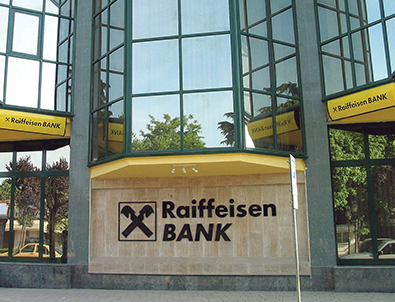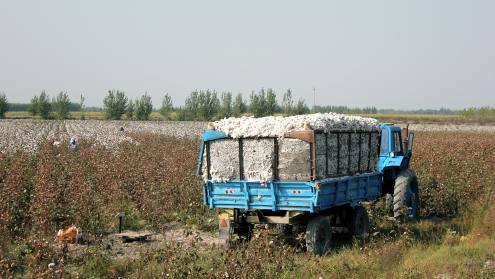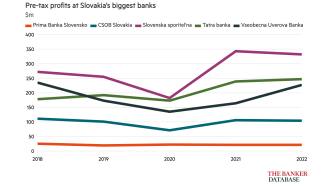Like many southern European countries, Albania has suffered significantly since the global financial crisis of 2007 and 2008. The country's commercial banks’ non-performing loan (NPL) rate peaked at 25% of gross loans in September 2014 but has since declined to 13.2%, thanks to write-offs and restructurings. The government believes the worst of the crisis is in the past and expects the NPL rate to fall to single digits by the end of 2018. Since the crisis, Albania’s banks have adopted much stricter lending criteria and the weakest banks have been acquired.
One such acquisition was that of Veneto Banka in July 2017. The subsidiary of troubled Italian lender Veneto Banca was part of the rescue by Italy’s second largest bank by assets, Intesa Sanpaolo. This year, American Bank of Investments, an Albanian lender backed by US private equity firm NCH Capital, said it would acquire the local subsidiary of the National Bank of Greece, NBG Bank Albania. This would reduce the number of commercial banks in the country to 14.
In March 2017, total assets in the Albanian banking sector stood at an equivalent of $11.3bn, according to the Bank of Albania, the country's central bank, compared with a total gross domestic product (GDP) of $14bn, according to the International Monetary Fund (IMF).
Seizing the moment
“The banks are in a strong position now,” says Bank of Albania governor Gent Sejko. “Most of Albania’s banks are foreign owned and so the global financial crisis did have an impact here. However, the banks remained profitable throughout and were able to weather it because of a low loan-to-deposit ratio of about 50%.
“Since the crisis, the Bank of Albania has tightened supervision and the banks have become more conservative,” adds Mr Sejko. “Thankfully, we have not seen any contagion from the crisis in Greece or problems in Italy.”
He notes that since the crisis hit, there has not been enough support for the productive sector of the Albanian economy. “Banks have been reluctant to lend to big companies, so we have not seen any big investments by the corporate sector,” says Mr Sejko.
The NPL crisis in the country came about because, between 2000 and 2008, the country’s banks lent vast sums to about 30 Albanian conglomerates, mostly involved in property development but also the energy sector. They did this on the assumption that the collateral used to secure the loans would rise in value by up to 20% per year. However, once the global financial crisis hit, the value of collateral fell significantly short of banks’ expectations. Bad loans belonging to these companies account for 65% of the banking sector’s total NPL portfolio, according to the Bank of Albania.
Since the crisis, the Bank of Albania has tightened supervision and the banks have become more conservative
“It is a bit like what happened in Spain,” says Mr Sejko. “The projects failed and the banks could not recover the money. The courts became involved but it became very hard to foreclose on a loan. The government has now agreed to vet all the country’s judges and this should help the banks because it will become easier to foreclose.”
An NPL action plan
In late 2015, the Albanian government and central bank started to implement a comprehensive 12-point action plan to reduce the stock and flow of NPLs. It included major legal changes related to the insolvency framework, collateral execution, credit information quality, the tackling of large corporate defaulters, and the reduction of informality. The action plan was backed by the World Bank, with policy advice and technical assistance from the IMF.
The government has now set up official bodies to vet the 400 judges and 400 prosecutors who make up the country’s judiciary, overseen by an international mission made up of EU and US legal experts. Up to half are expected to be replaced by new judges and prosecutors. This is an important test for Albania, as the European Commission is insisting that the government cleans up the judiciary before the country is able to join the EU. Most Albanians are passionate about EU membership and there is considerable political pressure on the whole political class to back the judicial reforms.
“Deposits have been growing by 2% to 3% a year,” says Spiro Brumbulli, secretary-general of the Albanian Association of Banks. “But loans have not really been growing at all. The banks became much stricter but borrowers suffered a crisis of confidence, too. The demand for credit has been limited.
“The crisis led to a glut of real estate on the market, reducing valuations. It has been hard to foreclose on a property because it is not always clear from the title deed who owns it. Albania requires new, foreign actors to enter all business sectors. Then the banks will start to lend to them.”
Albania was ruled by a Communist dictatorship from 1946 to 1992, which isolated it from the rest of the world. The dictatorship collectivised land and property but, following its collapse, many of the original owners claimed it back. This left an opening for corruption in the political and judicial system, underlined by Albania’s 91st place (with a score of 38 out of 100) in Transparency International’s 2017 Corruption Perceptions Index.
Bringing numbers down
“We have managed to get our NPL rate down from a high of 40% to 4.1% within the space of a few years through a combination of write-offs and cash collections,” says Andi Ballta, chief executive at the American Bank of Investments, which has total assets of $379m. “We are able to make decisions often very quickly as we are not a subsidiary of a bigger bank. The progress with the justice system reform will improve the quality of loan portfolios. Also, more reasonable bailiff fees and tranched payment of these fees would expedite the decision-making process and facilitate foreclosures, as well as create the right incentives for bailiffs and banks.”
The Albanian market is still an unsophisticated one, meaning that financial and capital markets are not yet developed
Recently, private bailiff rules were reformed, so that they receive 5% of the value of assets upfront before they have even collected any bad debt or enforced an executive title. However, many bankers take issue with the size of the fee and feel they should not be paid upfront.
“We’ve successfully dealt with NPLs during recent years,” says Georgios Papanastasiou, chief executive of Alpha Bank in Albania with total assets of $713m and more than 250,000 clients. “Besides a restructuring, foreclosing on collateral remains a challenge, but it is a necessary and important step. We have learned important lessons during the recent economic crisis. It is possible that some banks have become a bit too afraid, a bit too strict in their requirements for a loan, but there is a real market opportunity out there.”
The Albanian financial sector is dominated by banks, which represent about 90% of the system’s assets. In March 2017, banks had 506 branches nationwide, 1.6% fewer than in 2015 but four times greater than in 2005, according to the US Embassy in the country. Almost 90% of the lenders are foreign owned, particularly by banking groups from Austria, Greece, Italy and Turkey. The five largest banks hold three-quarters of the system’s assets and deposits.
Improving financials
Banka Kombëtare Tregtare is Albania’s biggest bank, with total assets of $3.01bn as of December 2016, according to The Banker Database. Since 2006, the bank has been majority owned by Calik Holdings, a privately owned Turkish holding company. Raiffeisen (Albania), a subsidiary of Austria’s Raiffeisenbank, is the second largest bank, with total assets of $2.1bn. Credins Bank, Albanian- and Dutch-owned, is in third place with total assets of $1.29bn.
At the end of 2017, the capital adequacy ratio for the whole Albanian banking sector was 16.6%, well above the regulatory minimum of 12%. Liquid assets made up 30.2% of total assets. In 2017, the system’s profitability improved, with return on assets reaching 1.5% in December from 0.7% in December 2016, and return on equity surpassing 15.7%, compared with 7.5% a year earlier, according to the World Bank.
“The banking system in Albania is liquid, well capitalised and profitable,” says Maryam Salim, country manager of the World Bank in Albania. “Several other small banks are believed to be for sale, and consolidation is expected to continue. Considering the size of the economy and the sector, there is room for further consolidation, or the entrance of reputable players, and efficiency gains in the system.”
The banks’ conservative lending practices, often mandated by head offices in other countries, are holding back the country’s economic growth, according to some experts. GDP growth is forecast at 3.7% in 2018 and the same level in 2019, according to the IMF. Credit to the domestic private sector stands at only 35% of GDP, compared with more than 50% among regional peers. There have been a few signs of recovery in credit to households but this is still far below its potential. Small and medium-sized enterprises (SMEs), the backbone of the Albanian economy, find it hard to access term financing.
“The main constraints faced by these enterprises in accessing external financing are the backlog of NPLs and related efficiency constraints in the banking sector,” says Ms Salim. “Informality, the bank’s lack of experience in serving smaller and riskier segments in the economy, as well as lack of diversification in provision of financing by non-bank financial institutions, are also factors.”
She believes that the best way to help SMEs is through developing non-bank financial institutions and making small companies more bankable. In 2017, 27 non-banking financial institutions and four savings and loan associations existed in Albania. The two main microcredit organisations are FedInvest and FondiBesa. The total credit portfolio of the microcredit industry in Albania is $570m. They offer loans of between $1000 and $500,000 but, in practice, it seems that it is hard for smaller companies to obtain them, according to the Albanian Association of Banks.
New opportunities
The Albanian economy is characterised by a high level of informality (especially in rural areas), estimated at up to 60% of GDP. The Albanian Association of Banks says the bank account penetration rate in Tirana, the capital, is up to 98%, but falls to about 50% in rural areas. Many far-flung villages have no bank branches and there is much more reliance on microcredit.
“Commercial banks do not have a big enough presence in rural areas,” says Mr Brumbulli. “Profitability in those areas is low. The infrastructure is not good enough and security can be an issue too.”
Silvio Pedrazzi, chairman of the Albanian Association of Banks and chief executive at Intesa Sanpaolo Bank in Albania – the country’s fourth largest bank, with total assets of $1.16bn – adds: “The Albanian market is still an unsophisticated one, meaning that financial and capital markets are not yet developed. Consequently, our bank’s activity is mainly focused on the traditional fields of collecting deposits and lending, as well as investing in sovereign securities.”
Another issue that the banking system faces is a high level of ‘euroisation’. In 2017, loans in foreign exchange (mostly euros) amounted to 57% of total loan portfolios, down from 72% in 2008, according to the Bank of Albania. Foreign exchange deposits now make up 53% of the total, up from 43% in 2008.
The banking authorities are concerned about the high proportion of loans in euros because these are usually not hedged against unfavourable exchange rate movements (borrowers’ incomes are almost always in Albanian leks).
The central bank would like to reduce foreign exchange loans to about 40% of the total. It has imposed comparatively higher requirements on banks for liquid assets in foreign currency compared with leks, and is trying to raise public awareness of the risks associated with euro loans.
A rosy future?
Despite all the structural reforms that the Albanian economy and banking system require, bankers are optimistic about the future.
“Albania offers many opportunities not yet exploited, especially in renewable energies, tourism and manufacturing,” says Mr Pedrazzi. “The country’s location makes it a natural entry point for the Balkans and for trading with European countries.
“I really believe in the so-called ‘regional market’. Basically, a dramatic increase in the trade with other western Balkan countries, known as the WB6, is possible. Banks should support such a process, providing lending and assistance.”
Christian Canacaris, chief executive officer at Raiffeisen Bank in Albania, agrees. “In these times, where technology is moving fast, the banking system can expand through digitalisation, so that the banks in Albania can offer the same modern and innovative banking services as other countries,” he says. “There are still many opportunities in Albania – such as the mortgage sector, the agriculture sector and tourism – where the future potential is big. In addition, the beginning of the EU accession negotiations will bring greater foreign direct investment into the country.”
While Albania is a candidate to become a member of the EU, along with Montenegro, Serbia, Turkey and Macedonia, accession negotiations are not expected to begin just yet as the European Commission is likely to look for further progress in the country’s judicial and anti-corruption reforms.
Still, Albania’s banks should be in a solid financial position following the recent consolidation drive and should be able to take full advantage of future opportunities, especially if and when accession to the EU becomes a reality.












